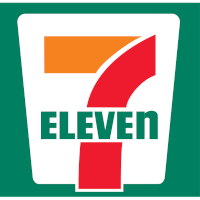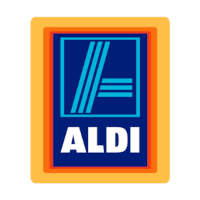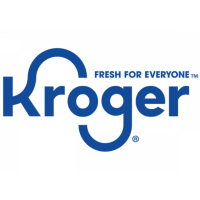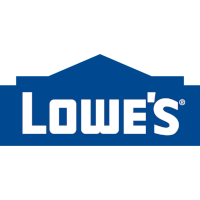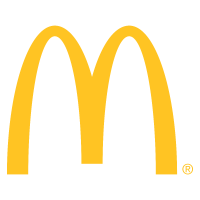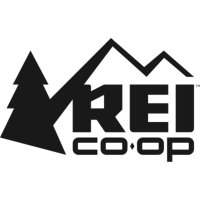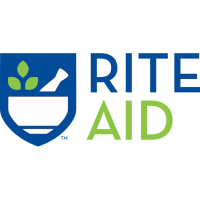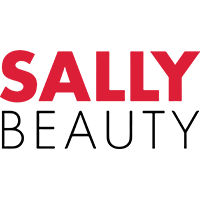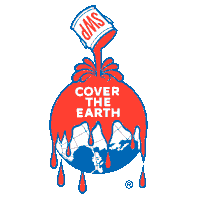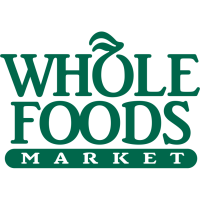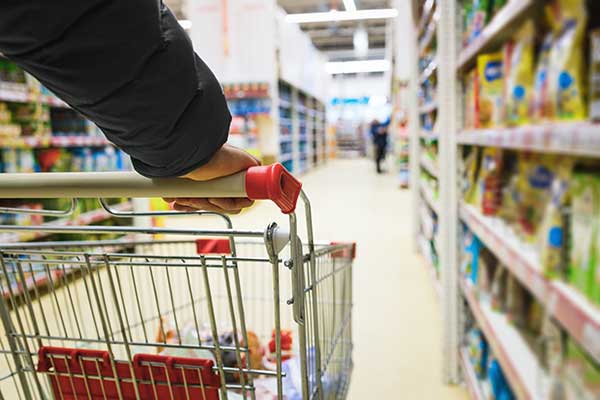Introduction
Retailers play a critical role in consumer and environmental health by choosing what to offer on their store shelves. However, the vast majority of retailers assessed in the 2024 Retailer Report Card do not have their own definitions for product or packaging safety, nor do they know the chemical content of the products they sell. By ignoring the potential hazard of their own products and packaging, retailers expose their customers, especially those most vulnerable, to the effects of hazardous chemicals in common, everyday products.
The problem: hazardous chemicals and plastics in consumer products
Billions of pounds of hazardous chemicals and plastics, primarily derived from oil and gas, are made into consumer products and packaging each year.[1]
Hazardous chemicals in products are of particular concern to women, both due to higher exposures and concerns about impacts during pregnancy and nursing. Toxic chemicals can cross the placenta, resulting in fetal exposure.[2] Chemicals like PFAS and hazardous flame retardants are contaminating women’s breast milk, exposing babies to harmful substances during critical windows of development.[3, 4] And studies have shown that women of color are disproportionately exposed to toxic chemicals such as phthalates, often used in fragranced beauty products marketed to people of color.[5]
Vulnerable populations such as low-income communities and communities of color are also disproportionately impacted, not only by the use of products, but also the production and disposal of toxic chemicals and plastics. Chemical manufacturing facilities and toxic disposal sites are often located near low-income communities of color, putting these populations at greater risk of toxic exposures and adverse health effects.[6] The production, use, and disposal of chemicals and plastics has created a toxic legacy that has impacted nearly every stretch of the planet, from environmental justice communities in Texas and Cancer Alley in Louisiana, to wildlife and fish in the ocean laden with dangerous microplastics, to millions of U.S. residents whose drinking water is contaminated with PFAS.[7-11] Scientists have sounded the alarm that the production and release of toxic chemicals like PFAS and plastics have exceeded “planetary boundaries,” surpassing safe levels for humanity and the planet.[12-14]
The vast majority of hazardous chemicals and plastics are derived from fossil fuels.[15] The chemical industry’s carbon emissions are a major contributor to the climate crisis, with global pollution from the plastics petrochemical industry equal to 600 coal-fired power plants. Global carbon pollution from plastic production is on track to triple by 2050.[16] To stem the climate crisis, urgent action is needed to reduce production of hazardous petrochemicals and plastics.
In addition to human and environmental health impacts, increasing regulatory, reputational, and financial risks form a strong business case for addressing hazardous chemicals and plastics. A growing number of states are enacting laws banning PFAS and other hazardous chemicals.[17] The U.S. EPA is considering whether to regulate harmful petrochemicals such as the PVC plastic feedstock chemicals ethylene dichloride and vinyl chloride.[18, 19] Additionally, world leaders are preparing to finalize the United Nations Global Plastics Treaty this fall.[20] Companies that fail to move ahead of these trends will find themselves out of compliance, possibly facing litigation threats, as with PFAS and asbestos in recent years.
Retailers must mind the store
Retailers have an obligation to ensure the products they sell do not contain highly hazardous chemicals and plastics that can have irreversible impacts on human health and contribute to climate change.
This new report reveals that many leading retailers are making progress to ban chemicals of high concern like PFAS and phthalates, and plastics of high concern like PVC and polystyrene. However, only a few earned top marks, like Apple, Target, Sephora, and Walmart, which are making concerted investments in both restricting dangerous chemicals and transitioning to safer solutions.
The Retailer Report Card: ranking retailers on toxic chemicals
The Retailer Report Card maps current best practices, from adopting corporate safer chemical policies to quantifying products that have been assessed as safer solutions. Based on over 20 years of work with retailers, brands, manufacturers, NGOs, and governments, the actions outlined in the Retailer Report Card are those used by the most forward-thinking retailers toward the goal of using verified safer chemicals and materials in the products they sell.
This year, the Mind the Store program celebrates 11 years since its launch and is pleased to release the sixth edition of the Retailer Report Card. The first edition was published in 2016. To mark this important milestone, we have updated the scoring rubric for the 2024 Retailer Report Card to continue to drive market transformation toward safer chemicals, products, and packaging. The updated criteria, the Four Essential Elements for a Safer Marketplace, were developed by Toxic-Free Future in consultation with key partners, leading retailers, and experts in the field.
The criteria used in previous report cards have been distilled into the “Four Essential Elements for a Safer Marketplace.” This was done for two primary reasons:
- To simplify and clearly communicate how the original criteria relate to one another; and
- To highlight the four key areas of focus that are essential for retailers to reduce and eliminate highly hazardous chemicals and plastics, and to move toward truly safer products, packaging, operations, and global supply chains.
The Four Essential Elements for a Safer Marketplace include:
![]() Corporate Commitment: Evaluates the retailer’s adoption of a corporate safer chemicals policy, participation in the Chemical Footprint Project, external collaboration, and support of public policies.
Corporate Commitment: Evaluates the retailer’s adoption of a corporate safer chemicals policy, participation in the Chemical Footprint Project, external collaboration, and support of public policies.
![]() Transparency: Evaluates a retailer’s knowledge of hazardous chemicals and plastics in the products and packaging it sells, public disclosure of chemicals and plastics to consumers, and accountability measures to ensure supplier compliance with restrictions on hazardous chemicals and plastics.
Transparency: Evaluates a retailer’s knowledge of hazardous chemicals and plastics in the products and packaging it sells, public disclosure of chemicals and plastics to consumers, and accountability measures to ensure supplier compliance with restrictions on hazardous chemicals and plastics.
![]() Ban the Bad: Evaluates the scope of hazardous chemicals and plastics a retailer currently prohibits, quantifiable time-bound goals to reduce and eliminate hazardous chemicals and plastics, and progress in reducing and eliminating high-priority chemicals, chemical classes, and plastics of high concern.
Ban the Bad: Evaluates the scope of hazardous chemicals and plastics a retailer currently prohibits, quantifiable time-bound goals to reduce and eliminate hazardous chemicals and plastics, and progress in reducing and eliminating high-priority chemicals, chemical classes, and plastics of high concern.
![]() Safer Solutions: Evaluates a retailer’s implementation of safer solutions, such as the sale of truly safer products; financial investments in safer solutions, and the steps it is taking to ensure suppliers are transitioning to safer chemicals and products.
Safer Solutions: Evaluates a retailer’s implementation of safer solutions, such as the sale of truly safer products; financial investments in safer solutions, and the steps it is taking to ensure suppliers are transitioning to safer chemicals and products.
What is a chemical of high concern?
Chemicals of high concern (CHCs) include the following:
- Carcinogens, Mutagens, Reproductive/Developmental toxicants
- Persistent, Bioaccumulative + Toxic (PBT)
- very Persistent + very Bioaccumulative (vPvB)
- Endocrine Disrupting Chemicals (EDCs)
- A chemical whose breakdown products result in a CHC that meets any of the above criteria
- Substances of equivalent harm
A safer solution avoids the use of all chemicals of high concern.
Expanded focus on chemical classes and the need for safer solutions
This year, we have put greater emphasis on the need for retailers both to address classes of hazardous chemicals and to ensure alternatives are truly safer for consumers, communities, workers, and the environment. A “regrettable substitute” occurs when a chemical of concern is eliminated from a product, only to be replaced by another of equal or greater concern. For example, in some products bisphenol A (BPA) has been replaced with bisphenol S (BPS), or long-chain PFAS by short-chain PFAS.[21, 22] In each of these cases, the replacement chemical is at least as hazardous as the original chemical of concern. Regrettable substitution happens when a manufacturer or retailer eliminates a known chemical of concern but does not know the identity of or evaluate the hazard posed by the replacement.
Ban the Bad Priority List
In alignment with legislative trends at the state and federal level, as well as in the European Union, the 2024 Retailer Report Card focuses not just on eliminating individual chemicals of high concern, but chemical classes of high concern. For example, a retailer should not simply restrict BPA in receipt paper, leaving it open to suppliers providing receipt paper containing the similarly toxic BPS. Instead, the retailer should restrict the entire chemical class of bisphenols. Toxic-Free Future identified and developed definitions for 20 high-priority chemical classes of high concern in alignment with Clean Production Action, drawing on both regulatory and academic sources.
We have also identified individual chemicals of high concern, and key plastics of high concern, such as polyvinyl chloride (PVC) and expanded polystyrene (EPS). The combined list of chemical classes, individual chemicals, and plastics is our new Ban the Bad Priority List. We urge major retailers to prioritize these chemicals and plastics for reduction and elimination.
Beyond Ban the Bad: Safer Solutions
Even with robust chemical restrictions, unless replacements are assessed and determined to be safer, they may be regrettable substitutes. While examples of regrettable substitutes abound, as noted above, Toxic-Free Future was especially moved to focus on the need for safer solutions after successfully working to ban toxic PBDE flame retardants, then finding regrettable substitutes, first in products, then in breast milk. With an added emphasis on safer solutions, the 2024 report has doubled the number of points retailers can receive for addressing safer solutions. As a result, some retailers’ scores have dropped compared to previous years.
More details on methodology
To learn more about the process for evaluating companies and to download the detailed Four Essential Elements for a Safer Marketplace scoring rubric, as well as a glossary of terms used, visit the Methodology section.
Next steps: take action
The 2024 Retailer Report Card helps inform consumers which companies to support and which to avoid. For retail laggards, leverage the power of the purse and join us in raising our voices to call for urgent reform. You can use our “take action” feature to write to the 17 companies in the 2024 Toxic Hall of Shame and share the report with friends and family on social media.
Together, we can hold big corporations accountable and drive a race to the top in the retail sector to ensure the stores we shop at “mind the store.”
References:
[1] United Nations Environment Programme, “Global Chemicals Outlook II,” 2019.
[2] C. Leonetti, C. M. Butt, K. Hoffman, S. C. Hammel, M. L. Miranda, and H. M. Stapleton, “Brominated flame retardants in placental tissues: associations with infant sex and thyroid hormone endpoints,” Environmental Health, journal article vol. 15, no. 1, p. 113, 2016, doi: 10.1186/s12940-016-0199-8.
[3] G. Zheng et al., “Per- and Polyfluoroalkyl Substances (PFAS) in Breast Milk: Concerning Trends for Current-Use PFAS,” Environ Sci Technol, vol. 55, no. 11, pp. 7510-7520, Jun 1 2021, doi: 10.1021/acs.est.0c06978.
[4] E. Schreder, G. Zheng, S. Sathyanarayana, N. Gunaje, M. Hu, and A. Salamova, “Brominated flame retardants in breast milk from the United States: First detection of bromophenols in U.S. breast milk,” Environ Pollut, vol. 334, p. 122028, Oct 1 2023, doi: 10.1016/j.envpol.2023.122028.
[5] A. Zota and B. Shamasunder, “The environmental injustice of beauty: framing chemical exposures from beauty products as a health disparities concern,” American Journal of Obstetrics and Gynecology, vol. 217, no. 4, October 2017, doi: 10.1016/j.ajog.2017.07.020.
[6] Toxic-Free Future, “PVC Poison Plastic,” April 13 2023. [Online]. Available: https://toxicfreefuture.org/wp-content/uploads/2023/04/Report-PDF-PVC-Poison-Plastic-Investigation-4.pdf
[7] Amnesty International, “THE COST OF DOING BUSINESS? THE PETROCHEMICAL INDUSTRY’S TOXIC POLLUTION IN THE USA “, 2024. [Online]. Available: https://www.amnestyusa.org/wp-content/uploads/2024/01/WEB-Petrochemical-The-cost-of-doing-business-v3.pdf
[8] Human Rights Watch, ““We’re Dying Here” The Fight for Life in a Louisiana Fossil Fuel Sacrifice Zone,” 2024. [Online]. Available: https://www.hrw.org/sites/default/files/media_2024/01/us_louisiana0124web.pdf
[9] E. Jeong, J. Lee, and M. Redwan, “Animal exposure to microplastics and health effects: A review,” Emerging Contaminants, vol. 10, no. 4, 2024, doi: 10.1016/j.emcon.2024.100369.
[10] Environmental Working Group, “Mapping the PFAS contamination crisis: New data show 7,457 sites with PFAS in 50 states, the District of Columbia and four territories,” 2024. [Online]. Available: https://www.ewg.org/interactive-maps/pfas_contamination/
[11] United States Environmental Protection Agency, “The Fifth Unregulated Contaminant Monitoring Rule (UCMR 5),” 2024. [Online]. Available: https://www.epa.gov/system/files/documents/2023-08/ucmr5-data-summary_0.pdf
[12] K. Richardson et al., “Earth beyond six of nine planetary boundaries,” Sci Adv, vol. 9, no. 37, p. eadh2458, Sep 15 2023, doi: 10.1126/sciadv.adh2458.
[13] I. T. Cousins, J. H. Johansson, M. E. Salter, B. Sha, and M. Scheringer, “Outside the Safe Operating Space of a New Planetary Boundary for Per- and Polyfluoroalkyl Substances (PFAS),” Environ Sci Technol, vol. 56, no. 16, pp. 11172-11179, Aug 16 2022, doi: 10.1021/acs.est.2c02765.
[14] L. Persson et al., “Response to Comment on “Outside the Safe Operating Space of the Planetary Boundary for Novel Entities”,” Environ Sci Technol, vol. 56, no. 10, pp. 6788-6789, May 17 2022, doi: 10.1021/acs.est.2c02265.
[15] L. Hamilton et al., “Plastic & Climate: The Hidden Costs of a Plastic Planet,” 2019. [Online]. Available: https://www.ciel.org/wp-content/uploads/2019/05/Plastic-and-Climate-FINAL-2019.pdf
[16] N. Karali, N. Khanna, and N. Shah, “Climate Impact of Primary Plastic Production,” Lawrence Berkeley National Laboratory, 2024. [Online]. Available: https://escholarship.org/uc/item/12s624vf
[17] E. Valenzuela. “States in the Lead: Six Key Takeaways from 2024 State Legislative Sessions.” https://www.saferstates.org/insights/states-in-the-lead-six-key-takeaways-from-2024-state-legislative-sessions/ (accessed October 28, 2024).
[18] United States Environmental Protection Agency. “Biden-Harris Administration Takes Latest Action Under Toxic Substances Control Act to Protect Public from Exposure to Harmful Chemicals.” https://www.epa.gov/newsreleases/biden-harris-administration-takes-latest-action-under-toxic-substances-control-act (accessed October 28, 2024).
[19] United States Environmental Protection Agency. “Risk Evaluation for 1,2-Dichloroethane.” https://www.epa.gov/assessing-and-managing-chemicals-under-tsca/risk-evaluation-12-dichloroethane#chemicaldescription (accessed October 28, 2024).
[20] United Nations Environment Programme. “Fifth Session (INC-5).” https://www.unep.org/inc-plastic-pollution/session-5 (accessed October 28, 2024).
[21] A. Maertens, E. Golden, and T. Hartung, “Avoiding Regrettable Substitutions: Green Toxicology for Sustainable Chemistry,” ACS Sustain Chem Eng, vol. 9, no. 23, pp. 7749-7758, Jun 14 2021, doi: 10.1021/acssuschemeng.0c09435.
[22] P. A. Rice, J. Aungst, J. Cooper, O. Bandele, and S. V. Kabadi, “Comparative analysis of the toxicological databases for 6:2 fluorotelomer alcohol (6:2 FTOH) and perfluorohexanoic acid (PFHxA),” Food Chem Toxicol, vol. 138, p. 111210, Apr 2020, doi: 10.1016/j.fct.2020.111210.

The 2024 Report
- I. Executive Summary
- III. Grades
- IV. Leaders and Laggards
- V. Key Findings
- VI. Recommendations
- VII. Resources
- VIII. Methodology
- IX. About this Report
More
Select a retailer
Tell retailers that got an “F” to step up and make toxics elimination a priority.

